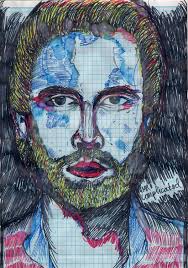
The practice of art, in whatever form, is undoubtedly and inherently therapeutic. The question is, how can you most benefit in your life from the gifts the arts have to offer? To provide a foundation for answers you can fully understand, I’m going to start with a quote from The Art Therapy Sourcebook by Cathy A. Malchiodi. She is a licensed art therapist and clinical counselor. She points out that people new to the subject can become confused by the term. Its use in many contexts, from the wide range of people and variety of situations where it is applied, gives it a diversity that can obscure its basic definition.
Ms. Malchiodi states, “The combination of the words art and therapy also can be confusing. Art therapist and psychologist Judith Rubin coined the phrase that opens this section: Art + Therapy = ? This formula conveys the equation that makes up art therapy–the blending of art and therapy. Art therapy is essentially the marriage of two disciplines: art and psychology. Aspects of the visual arts, the creative process, human development, behavior, personality, and mental health, among others, are important to the definition and scope of art therapy. Art therapy brings together all of these disciplines, making it difficult to understand at first glance.”
The foremost use of art therapy may be the healing of the artist. The concept is that expressing oneself creatively leads to healing and mental well-being. Here’s an example of how this can work, taken from the website for Ragamuffin Creative Arts Therapy.
“Natalie is 44 years old. She was referred to an Arts Therapist because of the decline in her physical and mental health. Her body was full of symptoms that doctors couldn’t find a cause for. Natalie was aggressive and often violent in her relationships and as a result they would often breakdown leaving her isolated and alone. The day she met the Arts Therapist she was desperate for help. The Arts Therapist invited Natalie to pour all her distress into a ‘sandtray’ using whatever objects she wanted to express herself. Natalie created the sandtray below.

- The Sandtray
At the front of the sandtray was a wall of superheros. Towards the back she placed a large crab on a pile of sand. Beneath the sand she placed a broken doll with a missing arm and a torn and dirty dress. Natalie began to speak about each object in the sandtray. The superheroes were aggressive protectors of the crab. The crab was protecting the broken dirty doll. The doll was buried and hidden so deep down in the sand…she was punished so terribly punished. Natalie began to sob as she told the story of the doll who was beaten and tortured by a cruel mother who made her stand in the cold garden for many hours without food or water for as long as she could remember. Natalie began to tell her true story. As she began to feel safe she said, ‘this was me when I was a child like this doll’. My mother was psychotic and violent and I lived with terrible beatings and cruelty every day. The child who had never been seen or heard began to speak and tell her truth for the first time. Natalie began to work with the Arts Therapist and her childhood pain bringing it slowly into the light. This began the slow and painful path to her recovery.” (Carrie Herbert 2006)
Art has been used for physical and mental healing for thousands of years by employing symbols that represent protection, invocation of special powers and that foster transformation. The renowned psychiatrist Carl Jung used patients’ drawings and universal symbols to help them access hidden content in the psyche that could help with resolution of mental problems. He said, “To paint what we see before us is a different art from painting what we see within.”
Art therapy became quite popular in the 1940’s and 1950’s, especially for doing personality analysis. This has evolved to the current practice by psychologists, art therapists and other professionals of using drawings for assessment and evaluation of mental disorders and emotional issues.
There are many resources to access if you wish to get involved with art therapy to help yourself or others. One organization is The American Art Therapy Association. It standardized credentials for art therapists in the United States. To obtain certification as an art therapist, you should contact another organization known as the Art Therapy Credentials Board.
Finding the truth within can be a painful process, though I believe it’s safe to say the rewards usually outweigh the pain encountered. Personal growth using the vehicle of art seems to be tantamount to finding your sea legs on a luxury liner. Dealing with rough seas is much easier in an environment of beauty.






